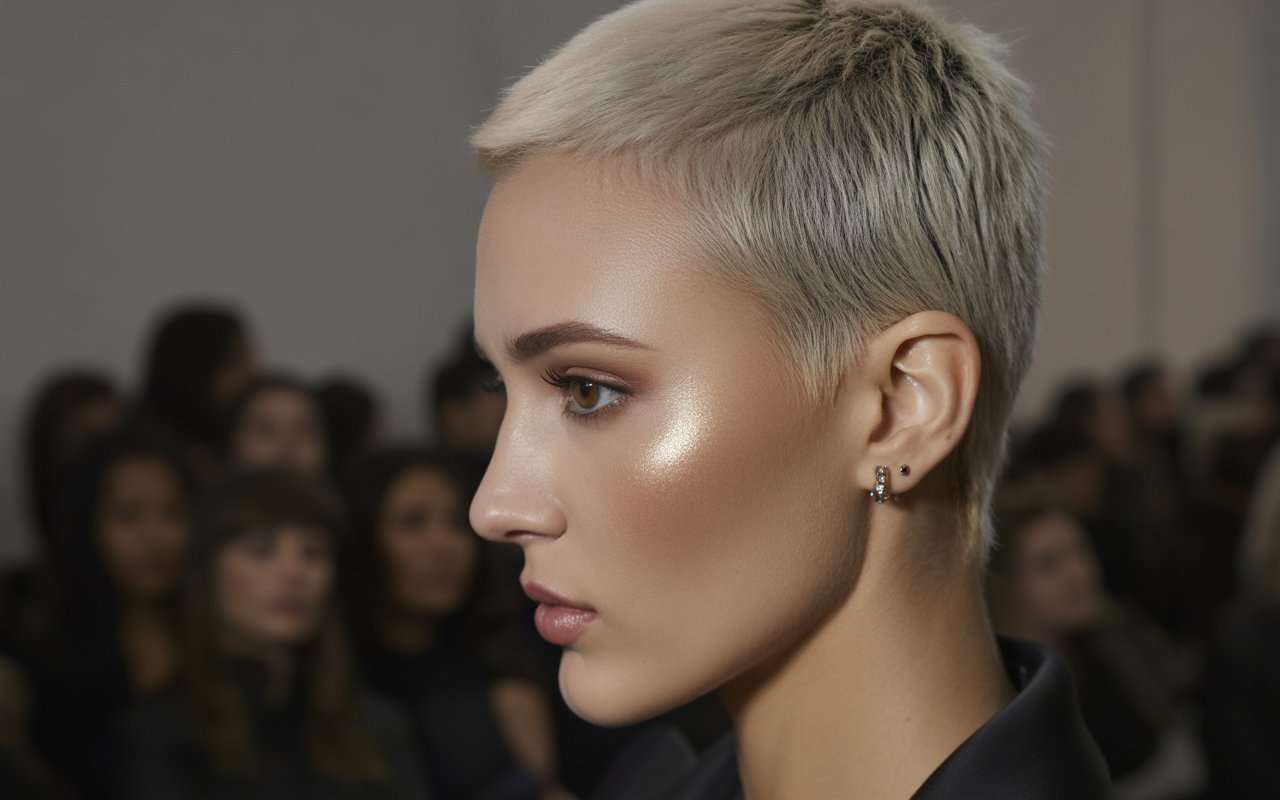Key Takeaways
- Layers create movement and volume: Whether you choose a layered bob, long layers, or a textured shag, strategic layering prevents flat, lifeless hair and adds dimension that makes you appear more youthful.
- Face-framing elements are essential: Cuts with face-framing layers, curtain bangs, or side-swept bangs draw attention to your eyes and cheekbones while softening harsh lines and covering forehead wrinkles.
- Length doesn’t determine youthfulness: Both short cuts like pixie styles and longer options like lobs or shoulder-length waves can create a youthful appearance—the key is choosing a cut with the right shape and texture for your face.
- Texture adds visual interest: Soft waves, choppy layers, and piece-y ends create movement that catches light differently, making hair appear fuller and more vibrant than straight, blunt cuts.
- Regular maintenance keeps cuts fresh: Most youthful haircuts require trims every 4-8 weeks to maintain their shape, with shorter styles needing more frequent visits to avoid looking dated or grown-out.
- Color dimension enhances any cut: Adding highlights, balayage, or lowlights creates depth that amplifies the youthful effect of your haircut, though a great cut looks fantastic with natural color too.
Looking for a fresh approach to turn back the clock? Your hair might be the answer. The right cut can brighten your face, soften harsh lines, and add movement that makes you appear more vibrant. Hair changes as you age, often becoming thinner or losing volume, but strategic styling choices can counter these effects. A well-chosen haircut works with your features rather than against them.
Many women don’t realize how much their current style might be aging them. Heavy, one-length cuts can drag down facial features. Overly structured styles can appear dated. The good news is that you don’t need drastic changes to see results. Sometimes a few strategic layers or a different parting can make all the difference. The key is understanding which elements create that youthful lift.
Let’s share here eight haircuts that have proven track records for creating a more youthful appearance. Each offers different benefits depending on your hair texture, face shape, and personal style. Whether you prefer short and edgy or long and flowing, there’s an option that will work for you. These aren’t trendy styles that will look outdated next year. They’re timeless cuts with modern updates that flatter women at any age.
Layered Bob
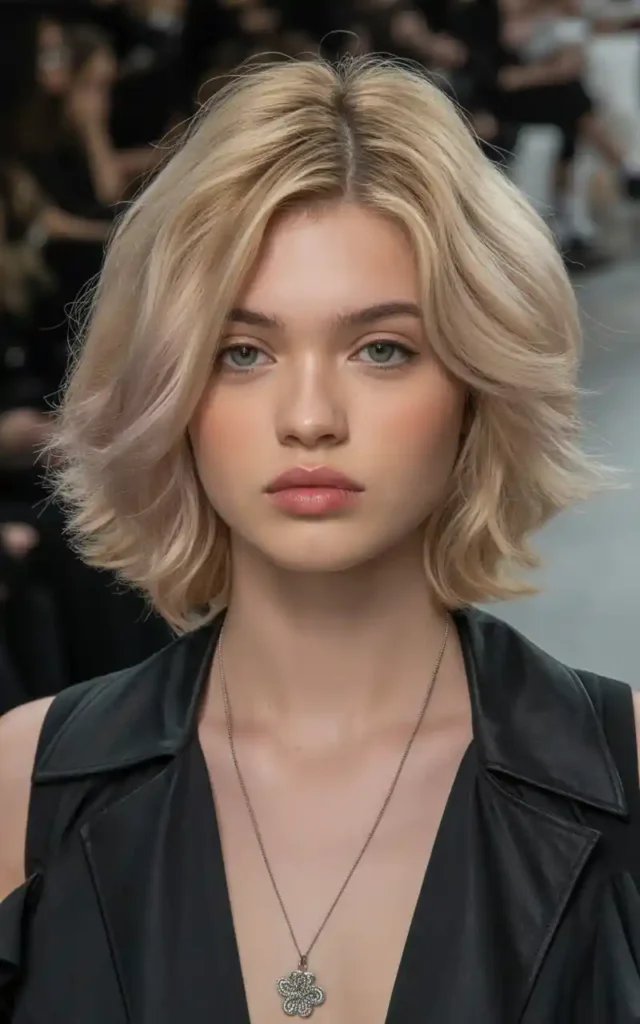
The layered bob sits comfortably between classic and contemporary. You get structure without stiffness, polish without appearing overly done. This cut typically falls somewhere between chin and shoulder length, with layers throughout that create movement and dimension. The layers prevent the hair from looking flat or lifeless, which can age you.
Why This Cut Works
Face-framing is the secret here. The layers around your face soften your features while drawing attention to your cheekbones and eyes. You avoid the harsh lines that come with blunt cuts. The length hits at a flattering point on most women, neither too short nor too long. Hair appears fuller because the layers create texture and body.
Styling Considerations
Your hair type matters with this cut. Fine hair benefits from the volume layers provide. Thicker hair needs proper thinning to prevent bulk. If you have naturally wavy hair, this cut will enhance your texture beautifully. Straight hair works well too, though you might need a round brush while blow-drying to add body.
Morning styling takes minimal effort. A quick blow-dry with your fingers or a round brush gives you polish. Air-drying works if you have some natural texture. Product needs are simple: a lightweight mousse for volume or a texturizing spray for piece-y definition.
Color Enhancements
Adding dimension through color amplifies the youthful effect. Highlights around the face brighten your complexion. Lowlights add depth that makes the cut look richer. Even if you keep your natural color, ask your stylist about gloss treatments that add shine.
The maintenance schedule stays reasonable. You’ll need trims every six to eight weeks to keep the shape. Between cuts, the style grows out gracefully without looking neglected.
Best Features
Here are specific advantages this cut offers:
Versatility: Works for professional settings, casual outings, and special occasions without looking out of place.
Low Commitment: Not as drastic as cutting everything off, so you can test shorter lengths gradually.
Styling Options: Wear it sleek and straight, wavy and textured, or somewhere in between depending on your mood.
This cut suits women who want change without going too bold. It refreshes your look while maintaining enough length for styling flexibility.
Pixie Cut with Texture
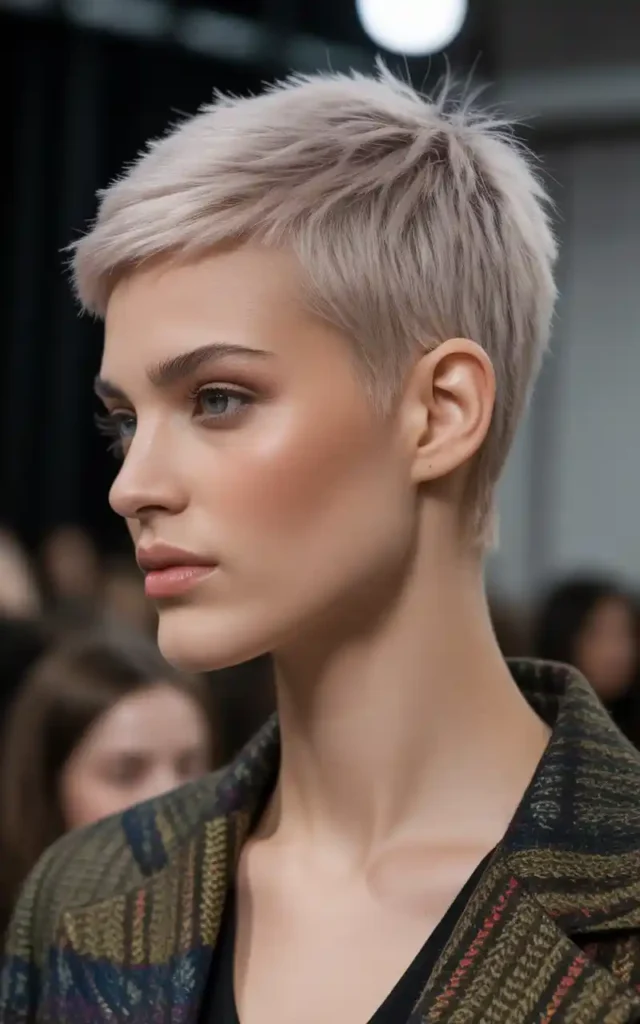
Short hair can feel liberating. A pixie cut removes weight, both literally and visually. This isn’t the pixie of decades past. Modern versions include texture, piece-y layers, and softer edges that prevent the severe look older styles sometimes created.
The Modern Approach
Texture makes all the difference. Your stylist will use point-cutting or razor techniques to create uneven ends. This prevents the helmet effect. The cut should have longer pieces on top with shorter sides and back. You can style the longer pieces forward, to the side, or swept back depending on your face shape.
Face Shape Considerations
Round faces benefit from height on top. Oval faces can go shorter all over. Square faces need softness around the temples. Heart-shaped faces look great with longer side pieces. Your stylist will adjust the proportions accordingly.
How does this create a youthful appearance? The cut emphasizes your eyes and cheekbones, drawing attention to the upper part of your face. This area tends to age more slowly than the lower face. You’re also making a bold statement that shows confidence.
Maintenance Reality
Be honest about your styling commitment. Pixie cuts need regular trims every four to six weeks. The shape grows out quickly, and you’ll lose that crisp look if you wait too long. Daily styling takes five minutes or less, though, which balances the frequent salon visits.
Product selection becomes important. A styling paste or pomade gives you control. Texturizing spray adds volume. Some women prefer a light gel for hold without stiffness. Experiment to find what works with your hair type.
Lifestyle Match
This cut suits active women. Swimming, working out, and outdoor activities become easier. You spend less time on hair and more time on everything else. Travel gets simpler too. No need for blow dryers, flat irons, or multiple products.
Growing It Out
Planning ahead helps if you think you might want longer hair later. Ask your stylist to keep the back slightly longer. This makes the transition easier. You can grow into a bob rather than going through an awkward in-between phase.
Consider these points before committing:
Bold Statement: This cut gets noticed, so be prepared for compliments and questions.
Hair Texture: Works beautifully on straight or wavy hair; very curly hair needs careful cutting to avoid roundness.
Facial Features: Strong features like defined cheekbones or striking eyes get emphasized, so if you love these aspects of your face, this cut highlights them.
Long Layers with Face-Framing
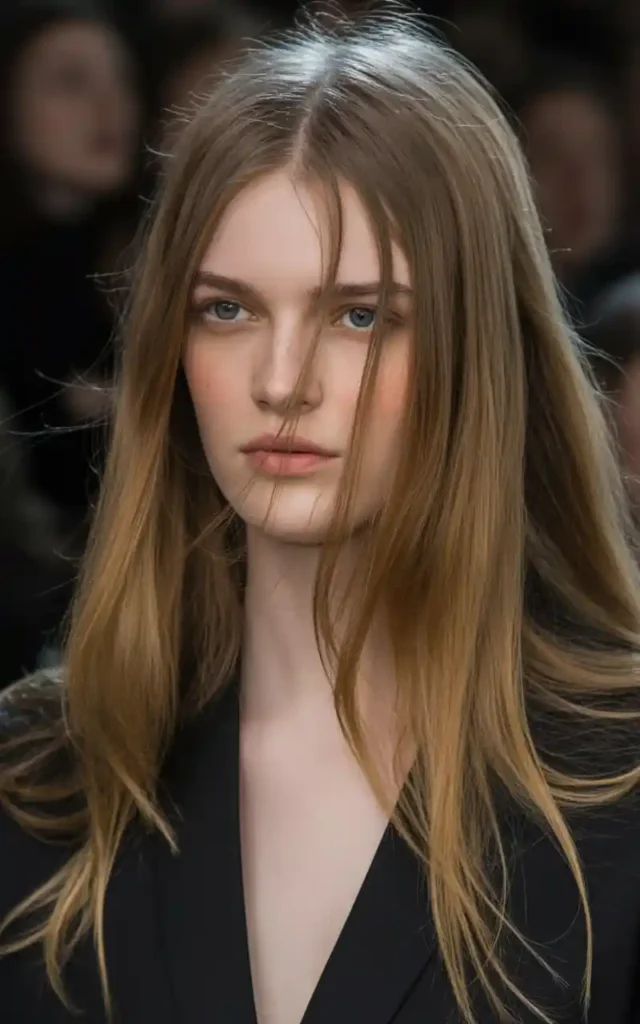
Length doesn’t have to age you. The problem with long hair isn’t the length itself but the lack of movement and shape. Long layers solve this issue by creating dimension throughout while keeping your desired length.
Understanding the Cut
Think of this as a graduated approach. The shortest layers frame your face, usually starting around chin or cheekbone level. Middle layers fall around shoulder or collarbone length. The longest layers reach your desired end point. This creates a cascading effect that adds body and prevents the flat, heavy look of one-length hair.
The face-framing pieces are critical. These shorter sections soften your jawline and create movement around your face. They catch light differently than the longer sections, adding visual interest.
Volume Solutions
Thin or fine hair struggles with long styles because weight pulls everything down. Layers combat this by removing bulk in strategic places. Your hair appears thicker because it’s not weighed down. The different lengths create the illusion of more hair.
Texture matters here too. Wavy or curly hair loves this cut because layers enhance natural movement. Straight hair needs more strategic placement to avoid a triangular shape. Your stylist should consider your natural texture before cutting.
Styling Approaches
Multiple looks come from one cut. Wear it straight for a polished appearance. Add waves with a curling iron for texture. Braid it, twist it, or pull it into a ponytail. The layers create interest even in simple styles.
Heat styling becomes optional. Air-drying with some texturizing product gives you a relaxed, beachy look. Your natural texture works with the cut rather than against it. This saves time and reduces heat damage.
Color Strategies
Length shows color beautifully. Balayage or highlights add dimension that layers enhance. The varying lengths catch light differently, making your color look richer. Even single-process color appears more dynamic on layered hair.
Root touch-ups become less obvious too. As your color grows out, the layers create enough visual interest that regrowth doesn’t show as starkly.
Morning routines stay simple with these features:
Wash-and-Go: With the right products, you can skip blow-drying entirely.
Protective Styling: Long enough for buns, braids, and ponytails when you need hair off your face.
Damage Control: Split ends matter less because trimming the longest layers doesn’t affect the overall shape significantly.
You maintain length while gaining movement. The face-framing creates a youthful effect without sacrificing what you’ve grown.
Textured Shag
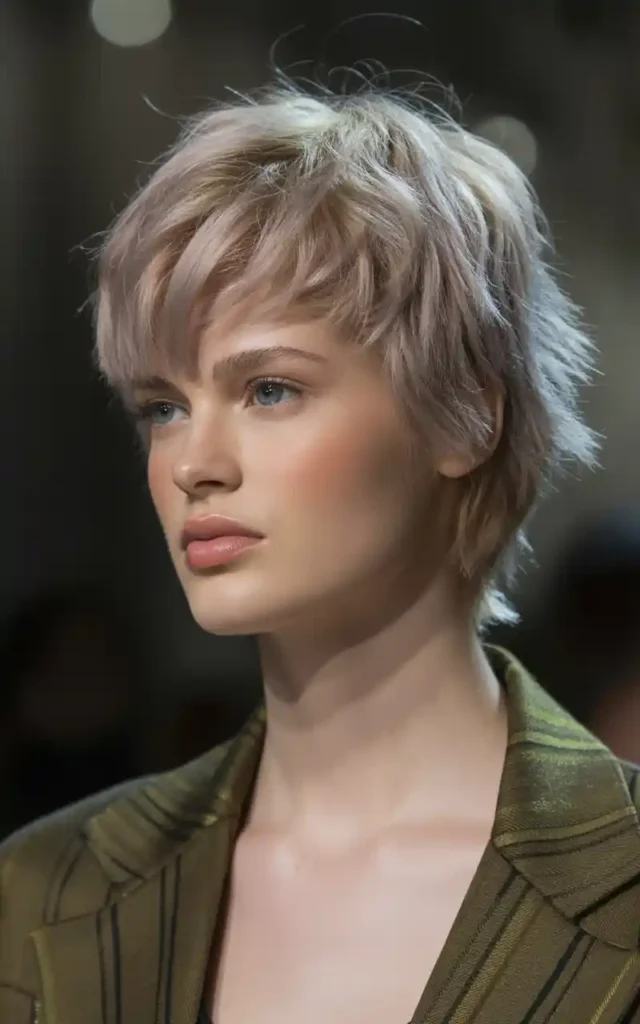
The shag returns with contemporary updates. This heavily layered cut creates intentional messiness that looks effortless and cool. Unlike the shags of the 1970s, modern versions include more strategic layering and texturizing that works with current styling products.
Structure Breakdown
Layers throughout create this cut’s signature look. The top layers are shorter, adding volume at the crown. Mid-length layers fall around the face. Longer pieces at the bottom provide movement. The result is choppy, piece-y texture that moves beautifully.
Feathering techniques soften the layers. Your stylist will use thinning shears or point-cutting to create uneven ends. This prevents bluntness and adds to the relaxed vibe. The goal is controlled chaos, not perfection.
Why It Works
This cut disguises thinning hair remarkably well. All those layers create fullness where you might be lacking it. The choppy texture draws the eye away from any sparse areas. Movement and dimension make hair appear more abundant.
Face shapes benefit from the strategic layering. Longer faces gain width from layers around the temples. Rounder faces get lengthening from vertical layers. Square faces soften with the piece-y fringe and side sections.
The Casual Factor
Polished perfection can age you. This cut’s slightly undone appearance reads as youthful and current. You’re not trying too hard. The style looks like you ran your fingers through your hair and walked out the door, even if you actually spent fifteen minutes styling.
How do you achieve this look daily? Start with damp hair. Apply a volumizing mousse or texture spray. Rough-dry with your fingers, scrunching as you go. Finish with a texturizing paste or dry shampoo for piece-y definition.
Length Options
Shags work at various lengths. Short shags hit around chin level. Medium versions fall to shoulders. Long shags extend past shoulders but typically stay above mid-back. Your preference and hair thickness will guide the decision.
Bangs often complement this cut. Wispy, piece-y bangs continue the textured theme. Side-swept options work too. Full, blunt bangs would clash with the choppy layers everywhere else.
Maintenance Schedule
Expect salon visits every six to eight weeks. The heavily layered nature means shape matters. As layers grow out, you lose that textured, piece-y look. Regular trims keep it fresh.
Here’s what makes this cut appealing:
Texture-Friendly: Wavy and curly hair types shine with this cut since it enhances natural movement.
Product Play: Different products create different looks, from beachy waves to rock-and-roll edge.
Color Canvas: Highlights and balayage look incredible with all the layers catching light differently.
You get an edgy, youthful vibe without looking like you’re trying to recapture your teenage years. The cut feels current and age-appropriate simultaneously.
Lob (Long Bob)
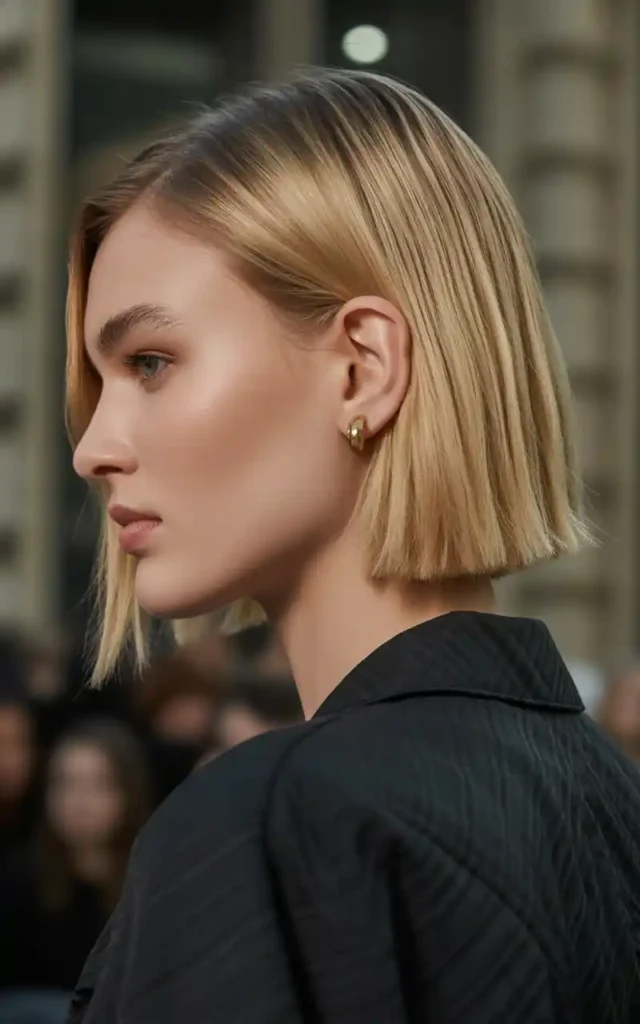
The lob occupies the sweet spot between short and long. This cut typically falls between chin and collarbone length, offering versatility without the commitment of very short styles. The name combines “long” and “bob,” but the result is entirely its own category.
Defining Characteristics
A lob can be blunt or layered, depending on your preference and hair type. Blunt versions create a modern, sleek line that looks polished and intentional. Layered versions add movement and work better for thicker hair or those wanting more styling options.
The length proves universally flattering. It’s long enough to pull back when needed but short enough to avoid weighing down your features. Hair sits at or just below the collarbone, creating a fresh, updated appearance.
Youthful Benefits
This length opens up your face without the dramatic change of a pixie. Your neck shows, which creates an elongating effect. The cut draws the eye to your collarbone and décolletage, areas that often age well. You’re directing attention to your best features.
Weight removal is key here. Hair past your shoulders can pull down your features, especially if it’s heavy or thick. The lob removes that weight while maintaining enough length for versatility. Your face appears lifted.
Styling Versatility
Multiple looks come from one cut. Straighten it for sleek sophistication. Add waves for casual texture. Tuck it behind your ears or let it fall forward. Half-up styles work beautifully at this length. You can even manage a small ponytail or low bun.
Different textures work well with this cut. Straight hair shows off the clean line of a blunt lob. Wavy hair creates beachy texture naturally. Curly hair gains shape and definition without the triangle effect longer lengths sometimes create.
Color Considerations
The lob showcases color treatments beautifully. The length is perfect for balayage, creating a sun-kissed effect. Ombré works well too. Even all-over color looks rich and dimensional at this length.
Maintenance becomes manageable. Color touch-ups don’t require as much product as longer hair. The cut grows out gracefully, so you can stretch time between salon visits if needed.
Practical Advantages
Consider these everyday benefits:
Quick Drying: Less hair means faster blow-drying times, saving you morning minutes.
Heat Styling: Flat irons and curling irons work faster on shorter lengths, reducing heat exposure.
Product Economy: You need less shampoo, conditioner, and styling products than with longer hair.
The lob suits women wanting change without going too short. You get a fresh look that’s easy to manage and style in multiple ways.
Curtain Bangs
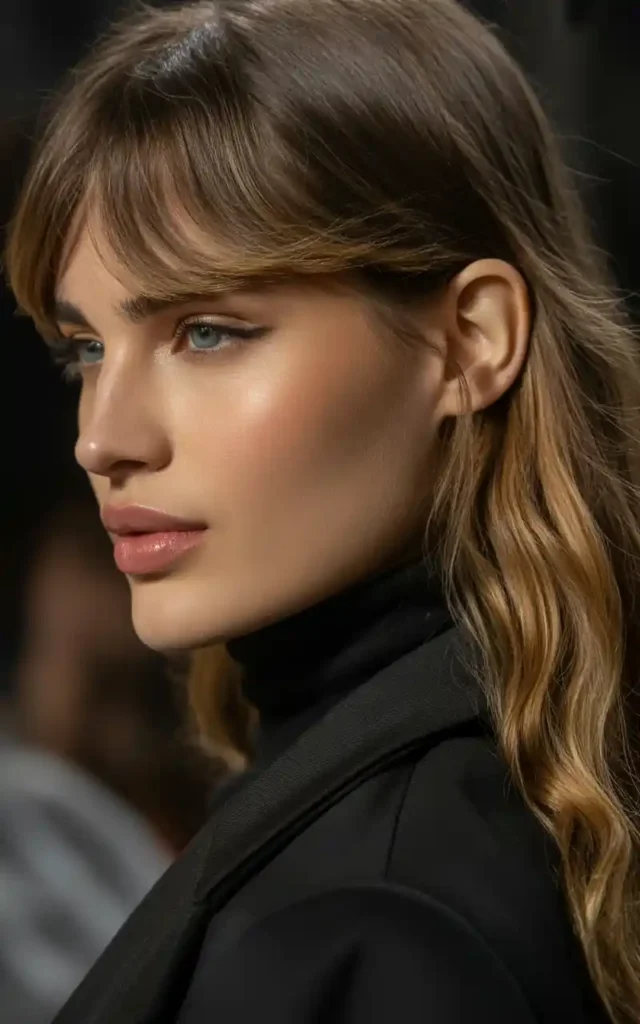
Bangs can subtract years from your appearance, but the style of bang matters greatly. Curtain bangs part in the middle and sweep to each side, framing your face softly. They’re less commitment than full bangs but offer similar face-framing benefits.
The Structure
These bangs start shorter at the center part, gradually lengthening as they sweep toward your temples. The longest pieces typically hit around cheekbone level or slightly below. This creates a gentle curve that opens up around the eyes while providing coverage along the sides of the face.
Unlike blunt bangs that create a heavy horizontal line across the forehead, curtain bangs maintain movement and lightness. They blend seamlessly into the rest of your hair rather than looking like a separate element.
Why They Work
Forehead lines become less visible. The center parting and sweeping sides create strategic coverage while keeping the look soft and natural. You’re not hiding your forehead completely, just creating a more flattering frame.
Face shapes all benefit differently. Round faces gain length from the center part. Long faces get width from the sweeping sides. Heart-shaped faces appreciate the balance they provide. Oval faces look great with nearly any bang style, curtain bangs included.
Styling Requirements
Daily maintenance stays simple. After washing, blow-dry the bangs while brushing them away from the center part. A round brush creates volume and the proper curve. Once dry, they typically stay in place without much effort.
Between washes, dry shampoo keeps them fresh. The center part means oiliness shows less than with full bangs. You can also pin them back or tuck them behind your ears when you want them out of your face.
Growth and Flexibility
These bangs grow out more gracefully than blunt styles. As they lengthen, they blend into face-framing layers. You’re not stuck in an awkward phase. If you decide you don’t like them, growing them out doesn’t require months of frustration.
You can also adjust the length. Longer versions feel more relaxed and bohemian. Shorter versions create more dramatic framing. Your stylist can customize the length to your comfort level.
How do you integrate them with different cuts? They pair beautifully with long layers, lobs, and shoulder-length styles. They add interest to blunt cuts. They even work with shorter styles like pixies or bobs, though the effect differs.
Practical Benefits
Here’s what makes curtain bangs worth considering:
Low Maintenance: Unlike full bangs that need daily styling, these often fall into place naturally.
Versatile Styling: Pin them back, straighten them, or add curl depending on your mood.
Softening Effect: They blur harsh lines and create a gentler face frame without looking heavy.
You get the face-framing benefits of bangs without the high-maintenance commitment. They offer a middle ground that many women find perfect.
Side-Swept Bangs
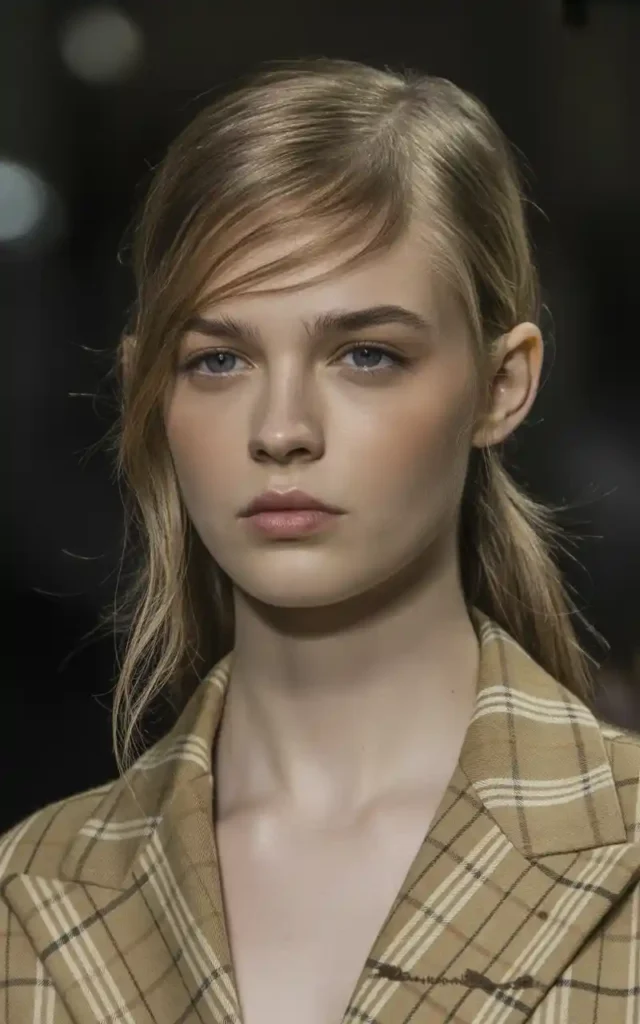
Asymmetry creates interest and can take years off your appearance. Side-swept bangs accomplish this by creating a diagonal line across the forehead rather than a horizontal one. The result softens features and adds movement to any haircut.
Understanding the Cut
These bangs sweep across your forehead from one side to the other, typically covering one eye partially. The length varies based on preference. Some women prefer them just grazing the eyebrow. Others like them longer, hitting mid-cheek. The angle creates the flattering effect, not necessarily the length.
Your stylist will cut them on an angle, making them shorter on one side and gradually longer as they sweep across. This prevents the blunt line of straight-across bangs while providing similar coverage.
The Youthful Effect
Diagonal lines are more flattering than horizontal ones. They create movement and draw the eye across your face rather than cutting it in half. This elongates your features slightly and prevents the harsh division straight bangs can create.
Covering part of your forehead strategically disguises lines and creases. The sweeping motion directs attention to your eyes. If you have good cheekbones, the diagonal line helps showcase them.
Different face shapes respond well to this style. Square faces soften with the curved sweep. Round faces gain length from the diagonal line. Oblong faces benefit from the horizontal coverage that shortens the appearance slightly.
Styling Options
Multiple approaches work depending on your hair type and the look you want. Blow-dry them with a round brush for volume and curve. Use a flat iron for sleek, smooth results. Let them air-dry for a more casual, textured appearance.
The direction you sweep them matters. Most people have a natural part and prefer sweeping bangs to one particular side. Your cowlick pattern will often dictate which direction works best. Don’t fight your natural hair growth.
Integration with Other Cuts
Side-swept bangs complement nearly every haircut length and style. They add interest to long, layered styles. They enhance bobs and lobs. They even work with pixie cuts, though the effect is more pronounced with longer styles.
Color placement can enhance the effect. Highlights in the bangs catch light and add dimension. The sweeping motion shows off color variation beautifully.
Maintenance needs stay moderate. Trim them every three to four weeks to maintain the length and angle. Between trims, you can sometimes trim them yourself with proper scissors, though professional touch-ups ensure the angle stays correct.
These advantages make side-swept bangs appealing:
Forehead Coverage: Hides lines and wrinkles while maintaining a soft, natural appearance.
Face Framing: Creates a flattering diagonal line that enhances facial structure.
Growing Out: If you decide you want them gone, they grow into face-framing layers relatively smoothly.
Shoulder-Length Cut with Soft Waves
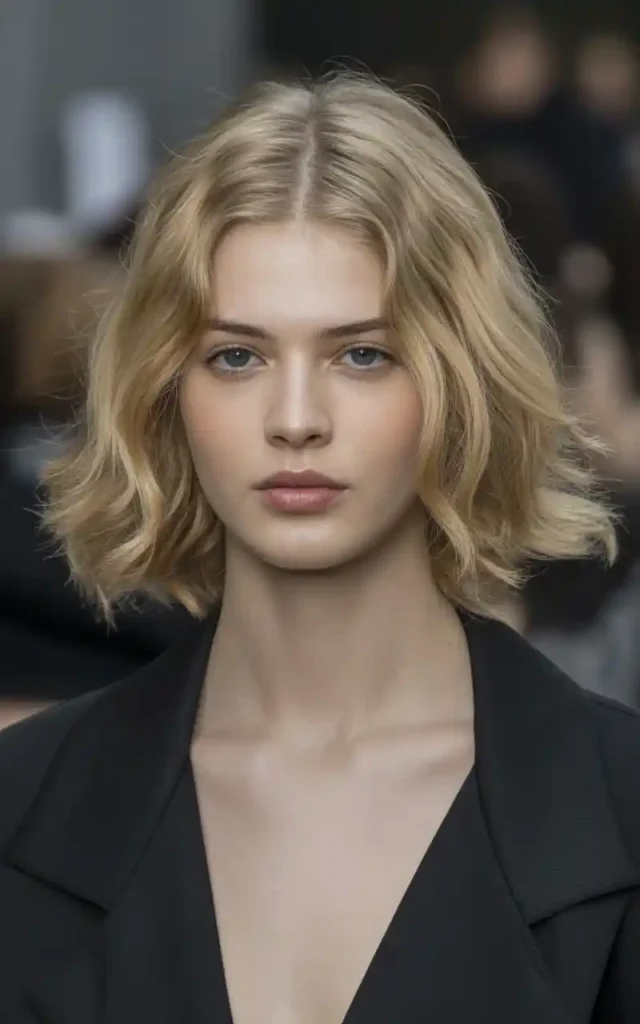
Shoulder-length hair with gentle waves offers timeless appeal. This style combines enough length for versatility with a shape that flatters most face types. The waves add texture and movement that straight hair sometimes lacks.
The Base Cut
The cut itself typically falls right at shoulder level or slightly below. Subtle layers throughout prevent bulk and create internal texture. The perimeter can be blunt or slightly textured depending on your hair thickness and desired look.
This length hits at a visually appealing point. It’s long enough to feel feminine and versatile but short enough to avoid dragging down your features. Hair frames your face without overwhelming it.
Wave Creation
Natural waves work beautifully with this cut. The length and layers enhance your texture without requiring much effort. If your hair is naturally straight, creating waves takes various approaches.
Curling irons or wands create defined waves. Section your hair and wrap it around the barrel, alternating directions for a natural look. Let the curls cool, then gently separate them with your fingers. Finish with a light texturizing spray.
Braiding works too. Braid damp hair before bed, secure the end, and sleep on it. In the morning, undo the braids and gently separate the waves. This method avoids heat damage and creates a softer wave pattern.
Why Waves Matter
Texture adds dimension that flat, straight hair lacks. Waves catch light differently, making your hair appear fuller and more dynamic. They create movement that draws the eye and keeps your look from appearing static or dated.
The softness of waves flatters your face. Hard, geometric lines can appear severe. Gentle curves and movement create a more youthful, approachable appearance. You look relaxed rather than overly controlled.
Face shapes all benefit from this combination. Round faces gain length from the shoulder-hitting cut. Square faces soften from the curved wave pattern. Oval faces look beautiful with nearly any style, and this one proves no exception.
Styling Products
The right products make or without break this style. Start with a lightweight mousse on damp hair for hold without stiffness. Add a heat protectant if using hot tools. Finish with a flexible-hold hairspray that allows movement.
Texturizing sprays enhance the piece-y quality of waves. Sea salt spray creates beachy texture. Leave-in conditioners prevent frizz while adding shine. Experiment to find your perfect combination.
Color Enhancement
Waves showcase color dimension beautifully. Balayage creates depth with lighter pieces catching more light. Highlights add brightness around the face. Even subtle color variation becomes more visible with textured, wavy hair.
The movement created by waves shows off color transitions. Flat, straight hair can make color look one-dimensional. Waves create shadows and highlights that make your color appear richer and more expensive.
Key advantages include:
Versatility: Straighten it for polished events or enhance waves for casual outings.
Face Framing: Waves create soft movement around your face that flatters and softens.
Styling Time: Once you master your technique, creating waves takes 15-20 minutes maximum.
This style suits women wanting a feminine, approachable look that stays current without requiring constant updates. You achieve sophistication and youthfulness simultaneously.
Your Hair, Your Confidence
Finding the right haircut transforms more than your appearance. It changes how you feel stepping out the door each morning. These eight styles offer different approaches to the same goal: creating a fresh, youthful look that works with your lifestyle and preferences. Some require more maintenance than others. Some suit particular hair textures better. The common thread is their proven ability to soften features, add movement, and create that vibrant appearance you’re seeking.
Your next step is simple. Choose the style that resonates with you and book a consultation with a trusted stylist. Bring photos showing the cut from multiple angles. Discuss your hair type, styling commitment, and face shape. A skilled professional will adapt these cuts to suit your specific features and needs. You’ll walk out with a style that makes you look younger and feel more confident.
Frequently Asked Questions
Q: Will cutting my hair short make me look younger?
A: Short haircuts can create a youthful appearance by removing weight and adding volume, but length alone doesn’t determine this effect. The cut’s shape, layers, and how it frames your face matter more than whether it’s short or long. Many women look equally youthful with shoulder-length styles as they do with pixie cuts.
Q: How often should I trim my hair to maintain a youthful appearance?
A: Most of these styles require trims every 6-8 weeks to maintain their shape and prevent split ends. Shorter styles like pixie cuts need more frequent visits, every 4-6 weeks. Letting your cut grow out too long can create a dated, unkempt appearance that adds years.
Q: Can I still have long hair and look younger?
A: Absolutely. Long hair with strategic layers and face-framing pieces looks youthful and vibrant. The key is avoiding heavy, one-length cuts that drag down your features. Add movement through layers, texture, and color dimension to keep long hair looking fresh.
Q: Do bangs really make you look younger?
A: Bangs can subtract years by covering forehead lines and drawing attention to your eyes. However, the bang style matters greatly. Curtain bangs and side-swept styles tend to be more flattering and easier to maintain than heavy, blunt bangs. Choose a style that suits your face shape and lifestyle.
Q: What if I have thin or thinning hair?
A: Layers actually help thin hair look fuller by creating movement and dimension. Avoid heavy, one-length cuts that show scalp more easily. Shorter to medium lengths often work better than very long hair, which can look sparse at the ends. Discuss volumizing techniques with your stylist.
Q: Should I add color to enhance my haircut?
A: Color dimension through highlights, balayage, or lowlights can enhance any cut’s youthful effect. Lighter pieces around the face brighten your complexion. However, color isn’t mandatory. A great cut looks fantastic with natural color too, especially when the hair is healthy and shiny.
Q: How do I know which cut suits my face shape?
A: Oval faces suit most styles. Round faces benefit from cuts with volume on top and length that extends past the chin. Square faces look best with soft layers and curves. Heart-shaped faces need width at the jawline. Bring photos to your stylist and discuss which elements will flatter your specific features.
Q: What’s the easiest low-maintenance haircut from these options?
A: The lob offers excellent versatility with minimal styling requirements. Shoulder-length cuts with soft waves also style easily, especially if you have natural texture. Pixie cuts dry quickly but require frequent trims. Consider your styling skills and time availability when choosing.
Q: Can these haircuts work with curly hair?
A: Most of these styles work beautifully with curly hair. Layers are especially important for curly textures to prevent the triangle shape and add definition. The textured shag and long layers with face-framing particularly enhance natural curls. Discuss curl-specific cutting techniques with a stylist experienced in curly hair.
Q: How long before I see the youthful effects of a new haircut?
A: The effect is immediate. A flattering haircut changes your appearance the moment you leave the salon. However, you might need a week or two to learn how to style it properly. The full impact shows once you’re comfortable with your new cut and have found your styling routine.

